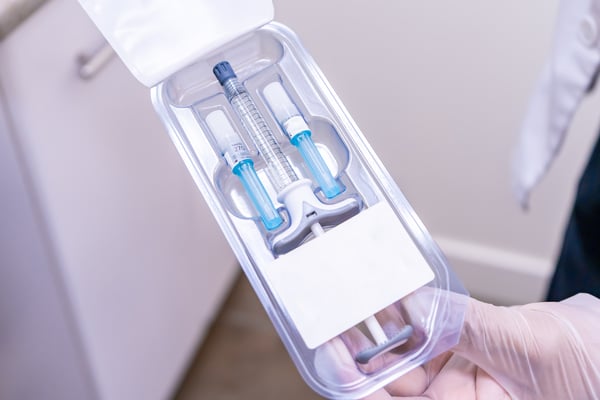Medical device packaging is an essential component for medical device companies. Not only do devices need to be packaged safely and securely, but packaging can also make a device more accessible and user-friendly. When it comes to developing packaging for your medical device, there are plenty of avenues to take. With options comes opportunity, and also the potential for pitfalls. Here’s a look at three mistakes to avoid when developing and manufacturing medical device packaging.
Medical Packaging Mistakes to Avoid

1. Prototyping Prior to Proof of Concept
Some companies move into developing medical device packaging without having a fully dialed-in concept. While it’s great to get a head start on packaging, this approach can be quite costly. In these cases, we can step in and help with that preliminary work. More often than not, we’re able to provide guidance and insight that provide both short and long-term benefits.
A short-term example being a reduction of both the time and resources required to prepare your medical packaging to the marketplace. When kinks and incongruences can be worked out during preliminary design stages, it reduces the number of prototyping rounds your medical device packaging has to go through.
A long-term example being identifying an alternative plastic material that provides all the desired characteristics while being a less costly raw material. Setting material costs lower at the beginning yields significant cost reduction of the lifetime production of medical packaging.
2. Choosing the Biggest Packaging Partner
It can be tempting to choose the biggest, most well-known supplier for medical device packaging, but it’s worth noting that biggest doesn’t always equal best. Especially when you’re focused on finding the best fit for your company.
When vetting a medical packaging partner, it’s important to assess more than their reputation in the industry or their placement on a list. In addition to those things, look to see if the services they provide and the experience they own match up with what your company needs. Do they listen to you and show that you and your project matter? Or do they give you the amount of attention and care that correlates with your size and budget?
3. Getting Lost in a Sea of Lead Times
Lead times and turnaround times on prototyping, production tooling, and production parts are easily one of the biggest issues companies in need of medical device packaging face. Yes, packaging needs to meet standards, requirements, and regulations, but it also needs to have consistent and predictable lead times. Without this, planning and executing a go-to-market strategy becomes a logistical nightmare.
Bonus Tip: Adhere to Medical Device Packaging Standards
Ensuring your packaging meets the standards and guidelines set out by ISO is a necessary step in bringing your medical device to the marketplace. The easiest way to do this is to choose a supplier with the proper knowledge and certifications, including:
ISO 13485:2016 Medical Devices
With 13485:2016, ISO (International Organization for Standardization) provides a standardized set of requirements for regulatory processes, including management, manufacturing, and documentation.
"ISO 13485:2016 specifies requirements for a quality management system where an organization needs to demonstrate its ability to provide medical devices and related services that consistently meet customer and applicable regulatory requirements."
ISO 9001:2015 Quality Management Systems
ISO 9001:2015 provides requirements for quality management systems which are applicable to any organization aiming to provide and manage quality at a defined level of excellence.
"ISO 9001:2015 specifies requirements for a quality management system when an organization needs to demonstrate its ability to consistently provide products and services that meet customer and applicable statutory and regulatory requirements, and aims to enhance customer satisfaction through the effective application of the system, including processes for improvement of the system and the assurance of conformity to customer and applicable statutory and regulatory requirements."
Choose a Trusted Partner
Through development of your packaging, running into problems and roadblocks is a natural part of the process, but how those problems are handled has a lot to do with your packaging supplier.
Whether or not issues delay or otherwise negatively impact project lead times depends heavily on the nature and quality of your relationship with your supplier. At the end of the day, they are advisors for every aspect of your medical device packaging, from design to material choice, and manufacturability.
Choosing a supplier with both the expertise you need and values compatible to yours will help you access the best medical device packaging for your product.

